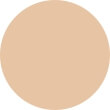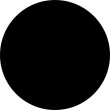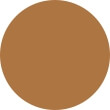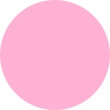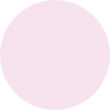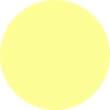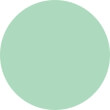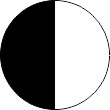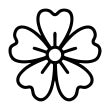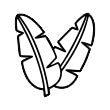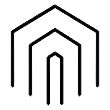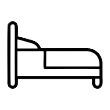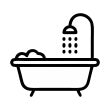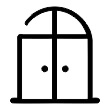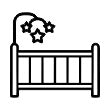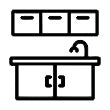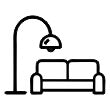How To Install Prepasted Wallpaper: Expert Techniques and Tips
Our Prepasted Smooth Removable Wallpaper is an eco-friendly product with a dry adhesive applied to the back. The adhesive is activated when it comes in contact with water, making it easy to install and reposition. No need to apply glue, as the adhesive is already included on the wallpaper. It offers a simple and hassle-free application process.
When it's time to remove the wallpaper, it comes off easily without leaving residue. Our Prepasted Removable Smooth Wallpaper is the best option for DIY projects. We advise practising with a Test Swatch before placing a larger order to ensure an easy installation process.
Experience the convenience and ease of our Prepasted Removable Smooth Wallpaper for your next home decor project.
Why Is Prepasted Wallpaper The Best For DIY Projects?
- Mess-Free Application: The Prepasted adhesive reduces the chance of making a mess during installation, ensuring a clean and hassle-free process.
- Easy Installation: Prepasted wallpaper is easy to install because it already has adhesive applied. You don't need extra glue, making it a convenient choice for DIY wall decor projects.
- Easy to Clean: Made of durable, water-resistant materials, prepasted wallpaper can be wiped clean with a damp cloth, ensuring a fresh and beautiful look for your walls.
- Easy Removal: Prepasted wallpaper can be removed easily with water, making it a popular choice for renters and homeowners who want to change their decor without causing damage to walls.
- Durable and Long-lasting: Designed to be scratch-resistant and durable, prepasted wallpaper provides a long-lasting wall covering solution that will maintain its beauty for years.
- DIY-Friendly: Prepasted wallpaper is great for DIY enthusiasts because it has a water-activated adhesive that is easy to use. It's a good option for people who have little experience or specialised tools.
-
Versatile and Stylish: Available in a wide range of designs and patterns, prepasted wallpaper allows you to express your style and easily transform any room.
GOT TEXTURED WALLS?
Avoid using Pre- Pasted wallpapers on textured or damaged walls. Textured walls have irregularities on the surface, making them unsuitable for application. Ensure a smooth and flawless surface for best results.
Before Beginning
- Upon receiving your order, carefully unpack and inspect its contents, even if you do not plan to install it immediately.
- Before installation, thoroughly examine the color consistency, panel match, or pattern repeat across your entire order.
- If you notice any defects or flaws in the wallpaper, refrain from installing it. Contact us first for further assistance.
- Whenever possible, commence the installation process from the left side and proceed towards the right.
- It is recommended to install murals in sequential order, starting with the lowest number (1) and following a left-to-right orientation.
Getting A Head Start
Preparation Of Your Walls For Pre- Pasted Wallpaper
Prepare Your Walls For Installation:
- Make sure your wall is smooth, clean, and free from dust.
- Any wall damage should be repaired or sanded, especially if there are any sharp edges that can tear the wallpaper.
- If you have recently painted or primed the walls, allow them to cure for at least 4 weeks before installing the wallpaper. This helps prevent bubbling.
- For optimal results, applying the wallpaper on a solid, light-colored surface is recommended.
Installation Recommendations:
- Avoid installing on textured walls.
- Do not apply over "scrubbable" paints.
Prepare Your Surface:
- Safely remove outlet covers and light switch plates, and turn off the power.
- Clean the wall's surface with a mild cleaner, and allow it to dry for 24 hours.
Improving Painted Wall Surface:
- Create a solution of 30% isopropyl alcohol and 70% water.
- Wipe the solution over the entire wall using a clean, lint-free rag.
- Allow the wall to dry completely.
- Install a test swatch to ensure proper adhesion before proceeding with a larger wallpaper order.
Electrical Precautions:
- Safely remove outlet covers and light switch plates in areas where the wallpaper panels will be installed.
- Turn off the power before working on these areas.
Cleaning The Wall:
- Clean the wall's surface using a mild cleaner and damp cloth.
- The surface needs at least 24 hours to dry properly.
Learn More On Cleaning The Wall - HERE
Note: Avoid prepasted wallpaper on textured walls, scrubbable paints, or No-VOC paints. If walls have been recently painted, wait 30 days before applying the wallpaper.
Collect Your Necessary Tools
Pencil
Level
Squeegee
Painter's tape
Paint roller/sponge (for the booking process)
Sharp utility knife
Drop cloth
Find A Friend And Plan Your Schedule
To hang wallpaper, having a friend or helper by your side is important as it requires two people. Find someone caring and willing to assist you in the process.
Additionally, make sure to allocate a whole day for the task. Setting aside ample time allows you to work steadily and maintain a precise hand throughout the installation process. Having a dedicated day allows for a smoother and more efficient wallpaper hanging experience.
Prepare For Installation:
Remove switch and socket covers, as well as window treatment hardware.
Lay Out Your Wallpaper:
- Unroll each roll in the same direction.
- Each roll will have the panel number at the top left. It is mandatory to install each panel according to this number.
Choose Where To Start Hanging:
- If installing across one, two, or three walls, begin hanging at the farthest left or right corner and continue in one direction until you finish.
- The final panel may not align seamlessly with the first when installing on all four walls. Start hanging the first panel at an inconspicuous point in the room, such as behind an open door or a taller piece of furniture, to reduce visual separation.
Important Note For Installations With Different Wall Heights:
- It is recommended to order all rolls at the longest wall height.
- Using rolls of different lengths can make it challenging to align the patterns due to the vertical design repeat.
Before starting the installation process, follow these steps to lay out your wallpaper properly.
Booking the Wallpaper?
Booking the wallpaper is the process of activating the prepasted adhesive by applying water. Sufficient water should be used to saturate the paper and create a goopy consistency.
Common Methods Of Booking Wallpaper:
- A clean paint roller or sponge should be used to wet the paper's back thoroughly.
- Use a high output spray bottle to saturate the adhesive, ensuring consistent coverage across the entire panel.
- Fold the wallpaper: Once the adhesive is activated, carefully fold the top half of the strip down onto itself, with the pasted sides facing each other. Make sure the edges of the wallpaper are properly aligned.
Advantages Of Booking:
- It prevents the wallpaper from drying out or curling prematurely.
- It makes the wallpaper easier to handle and transport without sticking to itself or the wall.
- It allows the wallpaper to relax and expand, ensuring a better fit during installation.
- After the recommended booking time of 15-45 seconds, the wallpaper is ready to be applied. Unfold the booked wallpaper carefully, starting from the top. Use a wallpaper brush or smoothing tool to smooth it down, remove air bubbles, and ensure proper adhesion.
Booking is a common technique professional wallpaper installers use to achieve a smooth and successful installation.
Tips For Achieving Proper Saturation And Booking The Wallpaper:
- Adequate Lighting: Ensure you have good overhead lighting to help identify dry spots on the wallpaper. Dry areas will appear dull under the light. If overhead lighting is unavailable, use a flashlight or cell phone to reflect light and detect variations.
- Focus On Edges: Pay special attention to the edges of the wallpaper, as they are often not fully saturated. These areas may appear dry under the light. Reapply water to these spots or edges to ensure proper saturation.
- Thoroughly Wet The Paper: Use a clean paint roller, sponge, or high output spray bottle to wet the back of the wallpaper thoroughly. Ensure the entire surface is evenly saturated with water, but avoid over-soaking.
- Folding Technique: Gently fold the top and bottom of the wallpaper so that the pasted sides meet in the middle. Take care not to crease the paper during this process. Refer to the provided diagram or instructions for guidance.
-
Allow Resting Time: Let each panel of wallpaper rest in the booked position for a minimum of 3-5 minutes before hanging. This allows the water to be absorbed into the fibers and activate the adhesive. As the paper dries, it will tighten, resulting in a smooth, professional finish.
Steps For Hanging The Wallpaper:
- Draw Guide Lines: To draw guidelines for wallpaper installation, start on the left side of your wall. Measure the width of the wallpaper from the corner and make a mark at that distance.
- Mark draw a vertical line: Draw a vertical line from the mark made on the wall, running from the ceiling to the floor. This line serves as the guide for the first wallpaper strip. Avoid aligning the wallpaper directly to corners or the ceiling to prevent uneven installation.
- Properly Book The First Panel: Allow the first wallpaper panel to rest in the booked position for 3-5 minutes.
- Unfold The Top Half: Gently unfold only the top half of the wallpaper while keeping the bottom part still folded.
- Align With The Ceiling: Start by applying the first panel of the wallpaper to the top of the wall. Let it slightly overlap with the ceiling. Ensure the panel is aligned with the Guide Line established earlier. Once the top half of the panel is in place.
- Adjust For An Uneven Ceiling: If the edge of the ceiling is not perfectly straight, you can start about an inch above the edge and trim away the excess once the wallpaper is dry. You can use painter's tape to secure the paper and prevent slipping during installation.
- Unfold The Bottom Half: After positioning the top of the paper, unfold the bottom half of the wallpaper.
-
Smooth The Paper Down The Wall: Use a damp sponge or a wallpaper squeegee to press the paper down the wall smoothly. Start from the center of the paper and work your way towards the edges, removing air bubbles as you go.
Steps For Overlapping The Wallpaper Panels:
- Book The Second Roll: Prepare and book the second roll of wallpaper.
- Hang The Second Roll: Hang the second roll so that it overlaps the previous roll by approximately 0.5" (1+ cm). Ensure that the overlap visually matches the pattern repeat. No trimming of the overlap is necessary.
- Mindful Of The Overlap: Be aware that the overlap may vary from roll to roll. Pay attention and visually match the repeat to maintain consistency.
- Guarantee A Seamless Finish: By overlapping the panels, you ensure that there are no spaces between them. This is important because wallpaper tends to shrink as it dries.
- Repeat For Each Panel: Repeat this step with each subsequent panel until you have completed the installation.
TIPS
- Installing Around Doors Or Windows: As usual, apply the wallpaper, but trim away any extra bulk that doesn't adhere to the wall. Please wait until the paper is fully dried before trimming it flush to the moulding.
- Dealing With Corners: Installing corners, whether interior or exterior, can be challenging, especially when working with more than half a roll's width from one wall surface to the next. Consider this when choosing your starting point. Ideally, installing a few inches of paper across an edge is best, as it's easier to keep the paper level, and there's less weight to balance.
- Avoid Cutting Paper For Corners: It's recommended not to cut the paper for corners, as it can create problems with achieving a seamless overlap.
-
Additional Installation Ideas: Since every room is different, you can search online for additional ideas on navigating around switches, electrical plugs, window hardware, and other obstacles during the installation process.
To Wind Up
Once all the wallpaper panels are installed, it's time to focus on the finishing touches for a professional look:
- Allow the wallpaper to dry completely, which typically takes at least 3 hours, ensuring it returns to its original size.
- Use a sharp utility knife with a good grip, like the Olfa SAC-1 Graphic Cutter, to trim off any excess paper around window and door frames and along the ceiling and baseboard. It's important to have sharp blades for cleaner cuts, so don't hesitate to replace them when needed.
- Wipe the walls with a damp sponge to remove any leftover adhesive residue.
- Properly recycle any remaining bits of paper that are no longer needed.
- Finally, step back and admire your completed work, appreciating the professional appearance you have achieved.
Best Practices For Cleaning Wallpaper:
At WallTrendz, we understand the sensitivity of wallpapers and the importance of proper cleaning and maintenance. To ensure your wallpaper retains its beauty and longevity, here are some guidelines for cleaning:
Product Cleaning Tips
- Test In An Inconspicuous Area: Before applying any cleaning solution, test it in a small, hidden wallpaper area to ensure compatibility and avoid potential damage.
- Use A Mild Soap And Water Solution: Prepare a solution using mild soap and water. This gentle mixture effectively removes dirt and stains without harming the wallpaper. Use a damp microfiber cloth and avoid aggressive rubbing while cleaning.
- Avoid Harsh Chemicals And Abrasives: Harsh chemicals and abrasive cleaners can cause irreversible damage to wallpaper. It's important to avoid using them during the cleaning process.
- Do Not Use Bleach Or Ammonia: Cleaners containing bleach or ammonia should be avoided, as they can discolor or weaken the wallpaper.
- Gentle Wiping: Use a soft cloth or sponge dampened with soap and water to wipe the wallpaper gently. Ensure the cloth or sponge is only slightly damp, not soaked.
-
Rinse And Dry: Rinse the cloth or sponge frequently to prevent dirt buildup. After wiping, dry the wallpaper using a clean cloth to remove excess moisture.
Removal Of Pre- Pasted Wallpaper
- Lightly dampen a sponge to reactivate the adhesive.
- Begin at the corner of the last installed roll and carefully peel the wallpaper away from the wall.
- Repeat this process for each roll, working in the reverse installation order.
- Use a damp sponge to wipe down the bare wall and remove any remaining residue.
